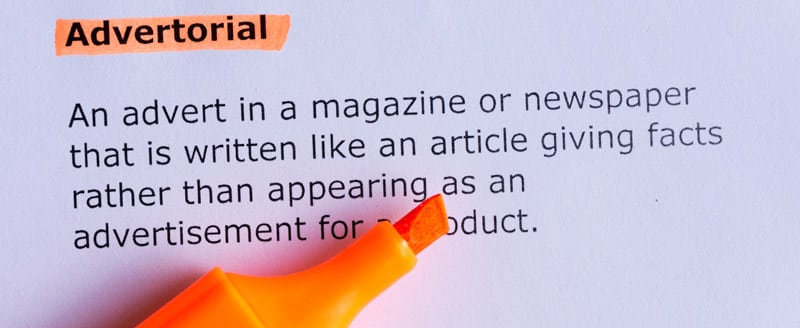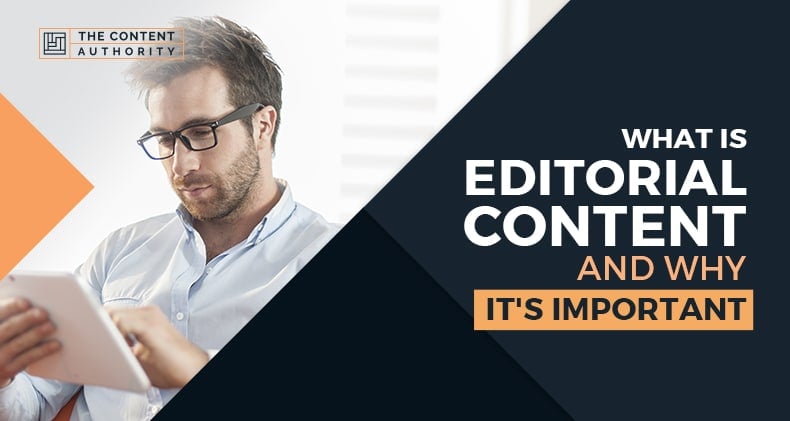Written content exists in different forms – both online and offline. While in your quest for information, you will come across content that’s entertaining, informative, a mix between the two, and also advertorials disguised as something else. There is one more type, which is called editorial content.
Editorial content is a piece of writing that makes an opinion, reconciles between contrary standpoints or viewpoints, balances its analysis of events and evidence, and has a crusading tone to it. Each of these elements are critical, and you cannot miss out on any or substitute one for another.
If all that sounds a bit loaded, keep reading to learn in detail the different aspects of editorial content and what makes it great for sharing thoughts, content marketing, or even selling things.

What is Good Editorial Content?
Good editorial content is all about offering value to readers. It provides information and/or explains a particular topic in a manner that is concise, clear, and makes the readers feel that their best interests are being taken care of.
A good editorial should put forth an opinion. It should be more than just pure analysis. And if that opinion is backed up by evidence, that’s even better. However, the evidence it bases analyses on should be authentic. Also, the analyses should be critical and sifted from diverse opinions and pieces of evidence floating around.
A good editorial should provide a refreshing perspective. And since the writing is going to be opinionated, it’s imperative the balance is maintained. Moreover, a solid editorial should be relevant without trying to be populist. It must tackle recent issues and events and formulate viewpoints after objectively analyzing the series of events and the various contrary/conflicting opinions.
As mentioned above, an editorial should always strive to balance things. However, that doesn’t mean there’s no scope for occasional stirring up of things, especially when the need arises. Therefore, a blunt and forthright editorial is as valid and reasonable as a neutral equipoise that apparently reconciles controversial bravados and conflicting positions.
The Aftertaste of Good Editorial Content
A good editorial, like a dessert after a sumptuous meal, should leave a distinct aftertaste. And that’s possible only if the reader feels held on to the piece and stays interested in it till its end. The content should, therefore, be relatively brief and also entertaining at the same time.
After having read the entire piece, the reader should feel empowered, enlightened, or be able to form opinions of their own on the matter discussed in the piece. And to do that the opinion the article puts forward should not be forced down the reader’s throat. It must be fairly subtle to appeal to any knowledgeable reader’s good sense.

Good editorial content should give the feeling of profundity, which one feels when in the company of an enlightened being. The feeling should charge up the reader to do something worthwhile, or at least enable them to let go of a vexing or knotty thought-process.
Most importantly, the reader should feel inclined to read the content again, like wanting to have the same dessert one more time. Also, if the author has written more editorials before, the reader should feel compelled to read those too.
Editorial Content and the Writing Style
Traditionally, an editorial is written using a literary style. What is ‘literary style’? While it’s not that simple to define the literary writing style, you could vaguely describe it as thoughts well put together in a given language. In other words, besides offering scientific or factual information, editorial content should also make for a fine literature piece.
However, since the crux of editorial content lies in its balance and opinion, the literary style adopted should in no way overshadow the thought of the piece. That’s a fairly thin line and the writer should walk that line skillfully. To give an analogy, the quality of the editorial content is a beautiful lady and the use of flowery language is her beautiful dress. Needless to say, the dress should accentuate the woman’s beauty and not overshadow or drown her.
The Role of the Editor
To ensure the “balance” element doesn’t get lost, it will help if the editor approaches the content with a balanced temperament. However, that poise in temperament doesn’t imply zero crusading zeal. Generally, editors with some merit showcase a reasonable quantity of the latter, although they could play it down or mock it when in public as mockery has always been in vogue. Crusading, on the other hand, is not as appealing.
Most editors worth their salt would deny the crusader in them and not make that side of them easily public. However, after you get to know a good editor at a certain level of depth, you will get to see the activist in them.
Difference Between Editorial And Advertorial Content
Through editorial content, experts can share their expertise. As the reader gets the information they could put to use, you create an impact on their minds and also a sense of trust. This means if you were to sell something tomorrow, convincing your readers to buy the product would be easier than overt selling. This is because your audience trusts you for the value you delivered before.
When you do advertorial content instead, wherein you make an apparent sales pitch, you are not providing real information – you are just telling them what and how to buy. Even if the goal is to sell a product, blatant sales pitches could break the trust readers have in you.

People do not buy a book or subscribe to an online magazine or journal hoping more products would get pitched at them. Readers buy content believing their decision, time, and money would be respected, and significant value would be provided to them in return.
Editorial content isn’t directly selling to the reader. Though the content offers a sneak peek into a product or service – just enough to pique the reader’s interest – it doesn’t resort to hardcore selling.
How Can Brands Leverage Editorial Content?
For a brand – be that a company or an individual – editorial content draws in audience attention. In the editorial section of a site, an array of topics could be covered and discussed. It could consist of anything from new product features, how-tos, and also content that’s currently trending. A brand that pursues editorial content will always have an edge over its competition that doesn’t do editorials.
Brands can use editorial content to their advantage in the following ways:
Educating readers
Brands can engage audiences and increase their readership creating content that aims at educating readers about their brand. Fresh releases and highlighting the best aspects of the brand will engage the right audience. Magazines, for example, excel at such use of editorial content.
Steering clear of marketing-heavy content
While educating your audience about your brand, it’s important you do not lade the content with classic marketing information. In other words, do not say how great your product/service is. Instead, stick to providing information. Let the readers form opinions on your product by themselves.
Showcasing expertise
Through the content you disseminate, let the readers learn more about your background and your expertise. If your product is technology-laden, explain or simplify those different technologies to your audience in a manner that even a layman could understand. By showcasing your knowhow and proficiency, you can influence buyers in ways you cannot possibly imagine, and certainly not achieve through traditional marketing.
Marketing Editorial Content Online
Good editorial content must exhibit all the aforementioned attributes. However, since you are competing against hundreds of thousands of other websites and blogs for a higher position in online search results, your editorial content must also conform to the principles of SEO (search engine optimization).
For your content to rank high in search engines, it should be fresh and unique. But since SEO is also about catering to search engine algorithms or bots, it’s imperative you strategically sprinkle the right keywords in the piece and also in the primary heading and few subheads. For instance, the related keyword for this piece is ‘editorial content’. It features in the title, subheads, and paragraphs of this article.

The keyword for your editorial content should be the main topic being discussed. Place keywords into the article in a way that they don’t look forced in. The last thing you would want to do is turn the article into an awkward read or spam your readers with keyword(s).
Also, use links to good effect. The links used could be inbound or outbound. In other words, they could direct the reader to other pages on your site or to some external site with authority. However, don’t do overdo the links – particularly the ones taking your visitors to third party sites. Because when your visitors click on these links and land on other sites, your site’s bounce rate goes up and the amount of time they spend on your site also decreases. Both are not good for your site’s SEO.
Conclusion
To sum it up, a solid editorial should put forth an opinion without taking sides or championing a specific cause. It must educate without being preachy. It should engage without brainwashing. It should motivate and not dictate. Perhaps, the most important thing is that the content should be brief and to the point.
Shawn Manaher is the founder and CEO of The Content Authority. He’s one part content manager, one part writing ninja organizer, and two parts leader of top content creators. You don’t even want to know what he calls pancakes.

